Nikon Nikkor AF-S DX 18-300 mm f/3.5-6.3G ED VR
3. Build quality and image stabilization
In photos below there are two Nikkors 18-300 mm VR and the Sigma 18-300 mm OS positioned next one another while set at 18 and 300 mm focal lengths.
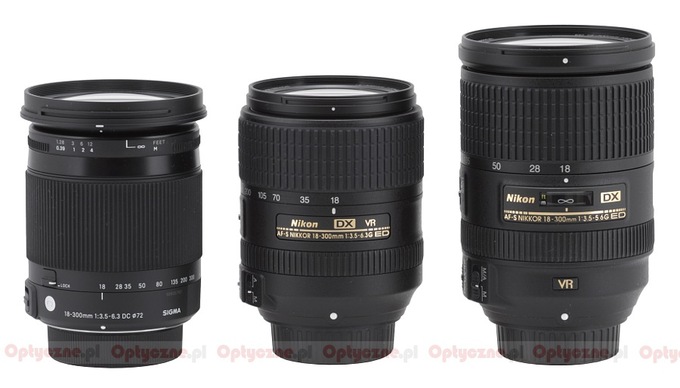 |
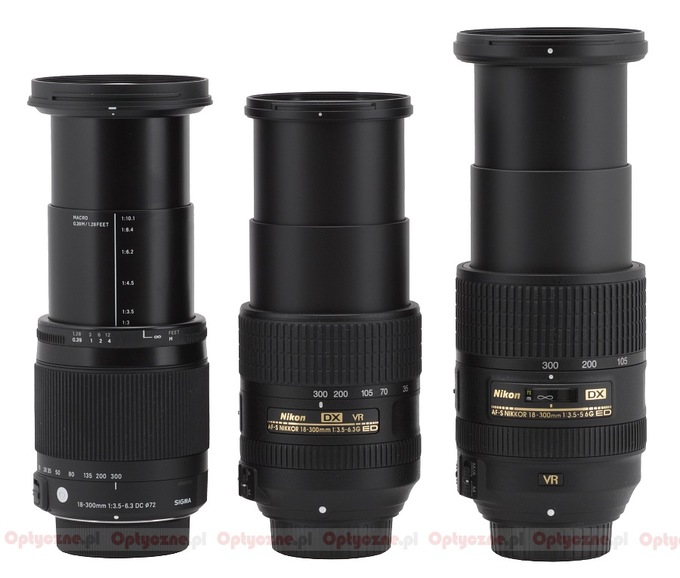 |
Please Support UsIf you enjoy our reviews and articles, and you want us to continue our work please, support our website by donating through PayPal. The funds are going to be used for paying our editorial team, renting servers, and equipping our testing studio; only that way we will be able to continue providing you interesting content for free. |
- - - - - - - - - - - - - - - - - - - - - - - - - - - - - - - - - - - - - - - - - - - - - - - -
The tested lens starts with a metal bayonet mount which surrounds a rear element of the lens, 19 mm in diameter. That element is situated on the same level as the mount with the focal length set at 18 mm. After passing to 300 mm the element hides inside the tube about 5 cm deep. The interior of the tube is properly blackened and matted but looking inside you can spot some construction parts which are not blackened at all.
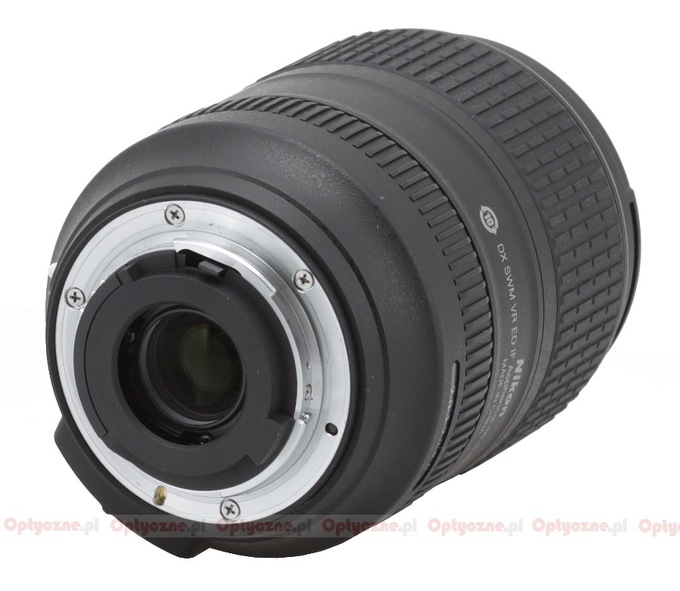 |
The proper casing of the lens is made of plastic-covered material; first you see a white dot which makes the alignment with a camera easier. On the left side you can find an array of switches allowing you to choose the focusing mechanism mode (A/M) and controlling the optical stabilization (VR ON/OFF).
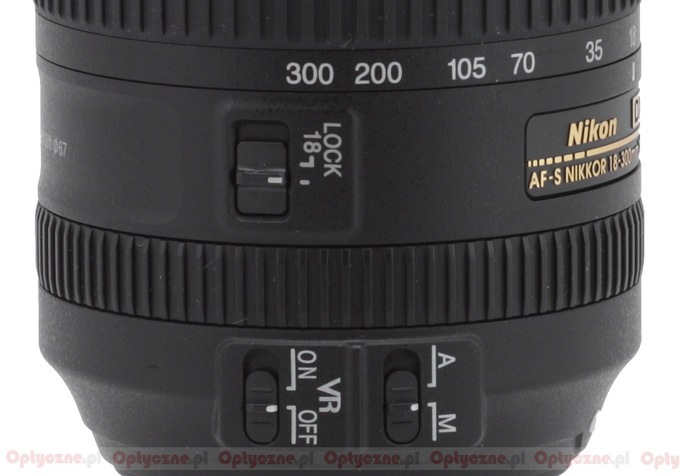 |
The next part is a manual focus ring, 10 mm wide and completely covered by rubber ribs. It moves smoothly and its range covers about 180 degrees. It also seems to have some initial play but it would be difficult to assess it properly as the lens comes without any distance scale. It is a noticeable simplification, compared to its predecessor.
Further on, you see a plate with the name and the parameters of the lens. On its left side there is a zoom lock switch, blocking the instrument at 18 mm focal length. We didn’t have to use it during our test because the Nikkor didn’t have any zoom creep tendency. Opposite to the plate, mentioned above, you can find the name and basic parameters of the lens and info that it was produced in China (the previous model was produced in Thailand).
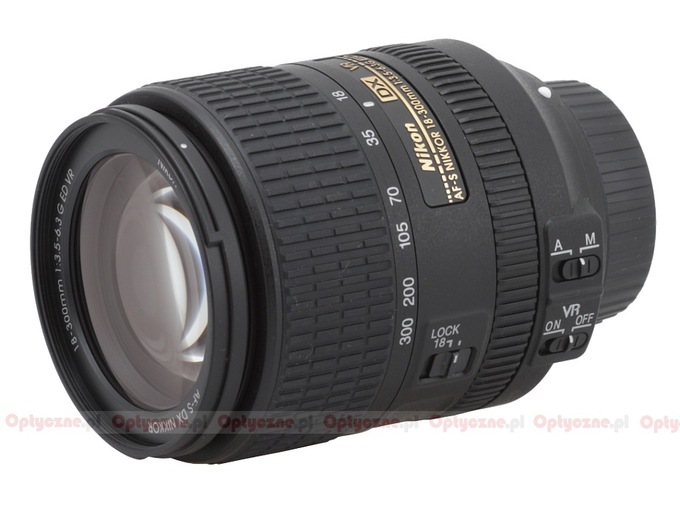 |
The next part is a zoom ring, 35 mm wide; the majority of its surface is covered by rubber ribbing, comfortable and pleasant to the touch. Under the ribbing you see focal length markings at 18, 35, 70, 105, 200 andá300ámm. The ring’s movements aren’t even – you can feel a significant increase in stiffness in a range from 35 to 200 mm.
The front element system is extended on a telescopic tube which first part is made of metal and the second – of plastic. The tube is stable, without any side play tendencies. When you progress from wideangle to 300 mm the length of the lens increases by 81 mm.
The front element of the lens is 53 mm in diameter and surrounded by an inscription with its name and the parameters; then there is a filter thread, 67 mm in diameter, and a hood mount. The hood is not included in the box.
In the chart below you can find an interesting comparison – it shows how the relative aperture changes with different focal lengths. It is clear that the parameters of the tested Nikkor are practically identical to those of the rival Sigma. What’s curious, the cheaper Nikkor and the Sigma are slower than the more expensive Nikkor 18-300 mm f/3.5-5.6 VR only at the bigger focal lengths. In the middle of the focal range the cheaper instruments are actually a tad faster, aperture-wise.
|
|
|
||||||||||
|
|
|
|
|
|
|
|
|
|
|
|
|
| Nikkor 18–300 f/3.5–5.6 |
|
|
|
|
|
|
|
|
|
|
|
| Nikkor 18–300 f/3.5–6.3 |
|
|
|
|
|
|
|
|
|
|
|
| Sigma 18–300 f/3.5–6.3 |
|
|
|
|
|
|
|
|
|
|
|
When it comes to the optical construction you deal here with 16 elements positioned in 12 groups (including three ED glass and three aspherical elements). Inside you can also find a round aperture with seven diaphragm blades which can be closed down maximally to a value ranging from f/22 to f/40, depending on the focal length.
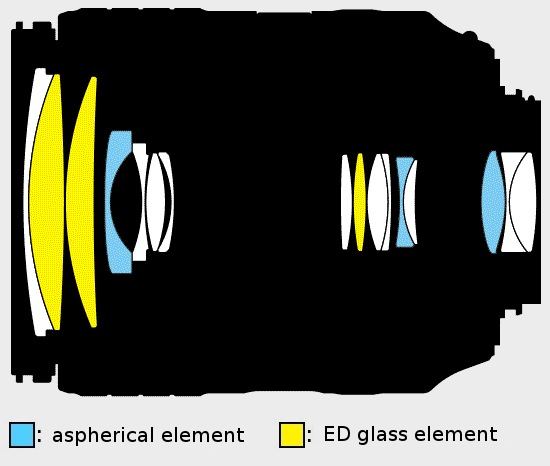
The buyers get only the front (LC-67) and rear (LF-4) cap in the box, nothing else.
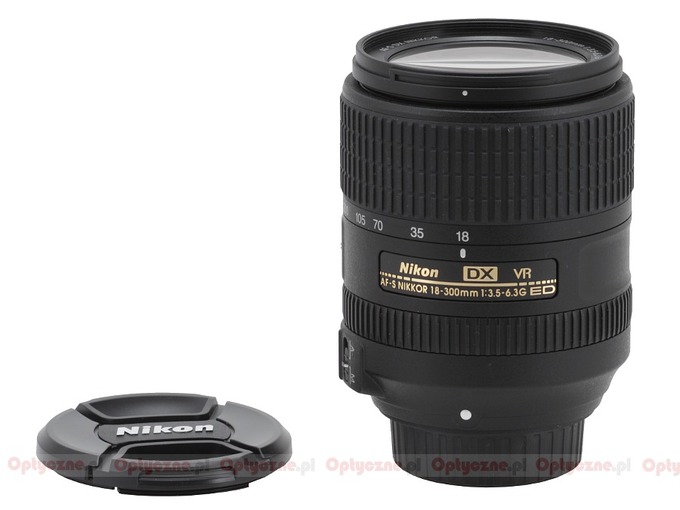 |
Optical stabilization
According to the producer the older, faster and more expensive Nikkor 18–300ámm f/3.5–5.6áVR was supposed to feature a stabilization system as efficient as 3.5 EV. The stabilization of the slower and cheaper model, surprise, is allegedly as efficient as 4 EV. Of course we didn’t hesitate to check that claim. At 300 mm focal length we took several dozen photos with shutter speeds ranging from 1/320 to 1/3 of a second with the stabilization switched on and off. Then we calculated the percentage of blurred photos at every speed and presented the results as exposure time function graph, expressed in EV (with 0 EV being the equivalent of 1/250 of a second). The results can be seen below.
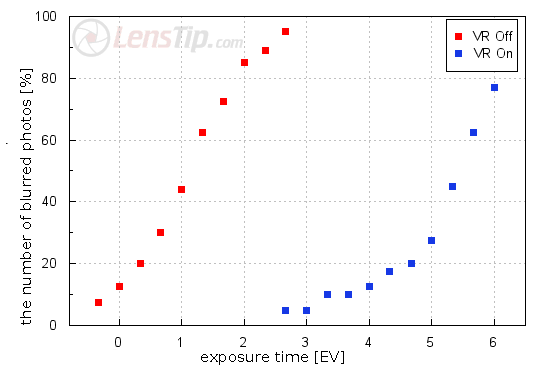
As you can notice the maximum distance between both curves amounts to about 4.0-4.3 EV and such is the efficiency of the optical stabilization system. The result is in perfect accordance with the statement of the producer and we consider it very good. It’s enough to mention here the fact that the more expensive Nikkor 18–300ámm f/3.5–5.6 reached only 3.3 EV – a distinctly worse result.






